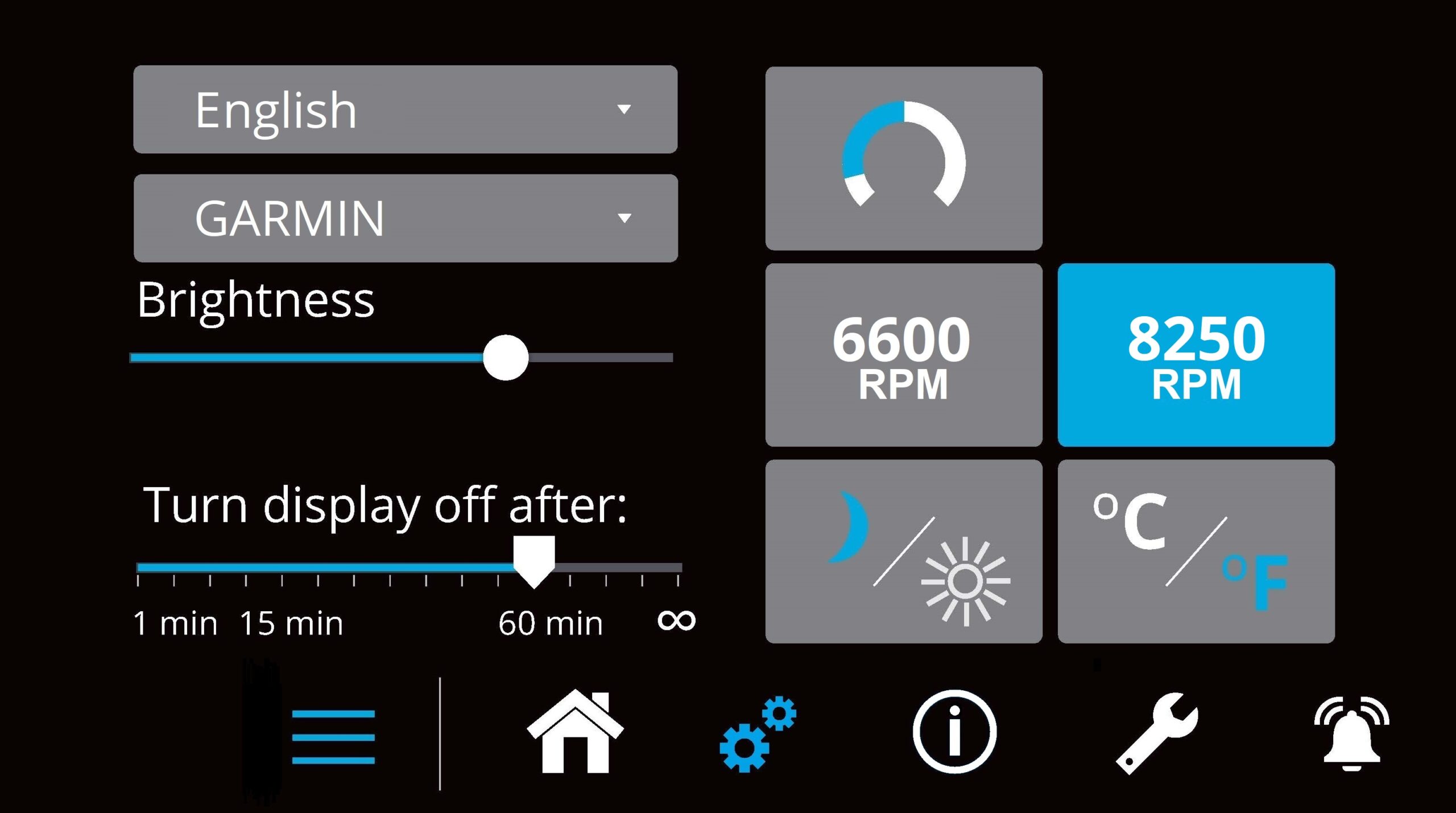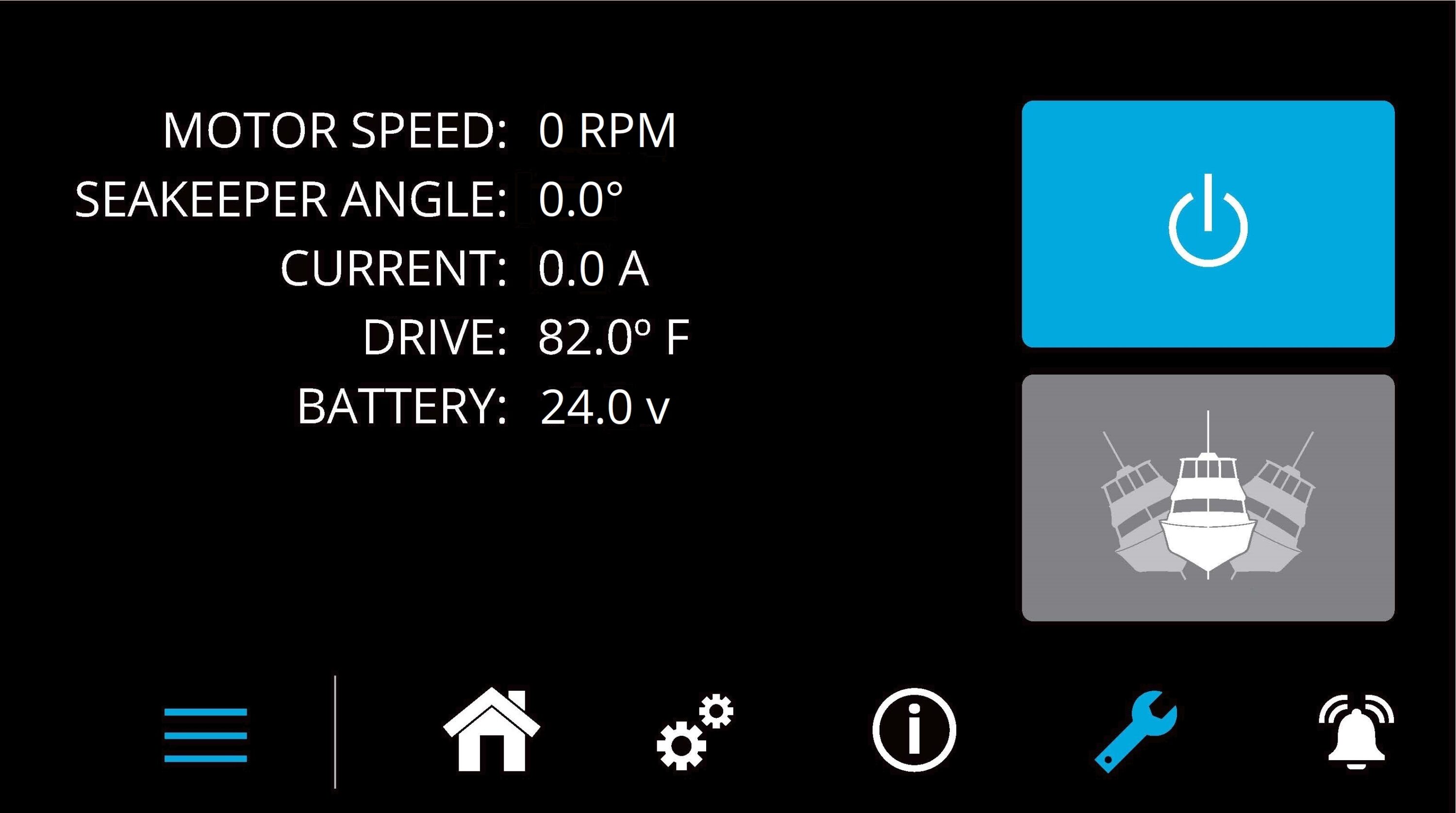Seakeeper 10 Operation Manual (90842-1)
3.2 Operating Instructions
Start Up Instructions
- Ensure AC and DC power are available.
- Turn on the boat’s DC circuit breaker that supplies power to the Seakeeper and DC seawater pump.
- Turn on the boat’s AC circuit breaker that supplies power to the Seakeeper flywheel motor.
- The DC seawater pump will operate when the Seakeeper is turned on and cooling is required.
- When the DC control power is turned on, the Display will initialize, and the Home Screen will appear. If a fault is present, an Alarm Screen will appear, and the Seakeeper will not be operable until the alarm is reset.

- To turn the Seakeeper on, press the On/Off button; the button will turn blue. The progress bar will appear and indicate how soon the Seakeeper will be available for stabilization. When the Seakeeper is initialized, and up to minimum operating speed, the Stabilize button will appear. At this point, the Seakeeper is available for stabilization.

- The progress bar indicating flywheel spool-up will disappear from the display screen once the STABILIZE button is pressed (turns blue), and the ConnectBox will fully illuminate. At this point, the Seakeeper has reached its rated operating RPM, and maximum stabilization is available. If the STABILIZE button has not been pressed(the button is grey), pressing the button will turn it blue, and stabilization will be provided. The seawater pump will cycle on and off based on the operating temperature of the Seakeeper 10.

Stabilization Instructions
Boat operators are advised that the Seakeeper’s sole function is to dampen a boat’s cyclic roll motions. The Seakeeper is not and is not intended to be, a substitute for adequate hull stability about the pitch, roll, and yaw axes, and the Seakeeper is not designed to prevent any instability due to improper boat operation, including, without limitation, any aggressive maneuvers at high speed. During aggressive maneuvers at high speed, the Seakeeper outputs a constant pitch moment, which can create a small bow-down or bow-up trim change.
Improper boat operation, including, without limitation, aggressive maneuvers at high speed, can result in the boat becoming unstable. If you intend to operate the boat in such a manner, you should lock the Seakeeper in the vertical position before operating the boat in that manner. Locking the Seakeeper is easily accomplished by turning the boat to starboard at slow speed in the Stabilize mode. After turning to the starboard for 5 seconds, turn the Stabilize mode off while continuing to turn, and then go to the Service Page on the display and confirm the Gyro Angle is within 10 degrees of 0 degrees gimbal angle.
To stabilize the vessel after the Seakeeper is On and the flywheel is above the minimum stabilization RPM:
- Press the Stabilize button. The button will turn blue, indicating that the Seakeeper stabilizes the roll motion.


If it is necessary to shut off power to the flywheel motor and slow the flywheel for any reason, press the Seakeeper On/Off button; the button will turn grey, and the Stabilize button will disappear, indicating the command has been accepted. The speed takes approximately 4+ hours to slow down to 0 RPM.
_________________________________________________________________________________________
If it is necessary to stop Seakeeper motion for any reason, press the Stabilize button. The Stabilize button will turn grey, indicating that the Seakeeper is locked. Only attempt to work on the Seakeeper once the flywheel has stopped spinning. If the brake system has automatically locked the Seakeeper due to an alarm or failure, no attempt should be made to bypass the alarm or automatic lock.
Speed Adjustment
- Press the Menu button
 , then select the Settings screen
, then select the Settings screen  .
. - Select the desired RPM button to adjust the Seakeeper’s speed. The selected RPM button will turn blue. Speed selection buttons shown below are examples and may not match operating speed of installed Seakeeper.

Seakeeper 10: Normal operational speed is 8,250 RPM. Quiet mode operates at 6,600 RPM, which allows stabilization at a reduced flywheel speed. After a 24 V power cycle to the Seakeeper, the speed selection will remain at the previously selected RPM.
Normal Shutdown Instructions

The circuit breakers should be left on as long as possible while the Seakeeper is spooling to remove heat from the Seakeeper.
Note: The seawater pump may run for up to 5 minutes after the Seakeeper is switched off and is coasting (with DC Seawater Pump power applied).
The Seakeeper flywheel motor should be stopped when pulling into port, and stabilization is no longer required. Securing the motor maximizes life by allowing the Seakeeper to start the coast-down cycle before cooling is shut off. Once the vessel is secured, the AC and DC breakers can be switched Off. The Seakeeper will continue to spool down to 0 RPM. No cooling is required during this time.
- Press the Seakeeper On/Off button. The On/Off button will turn grey. The Seakeeper will discontinue stabilization and the flywheel will start coasting.

- Once the vessel is secured in the slip and the generator and engines are shutdown, switch the AC and DC breakers that control the Seakeeper Off. The flywheel will continue to spool down to 0 RPM. Spool down can take 4+ hours from full speed. When the flywheel has stopped spinning, 0 RPM will appear on the screen.
